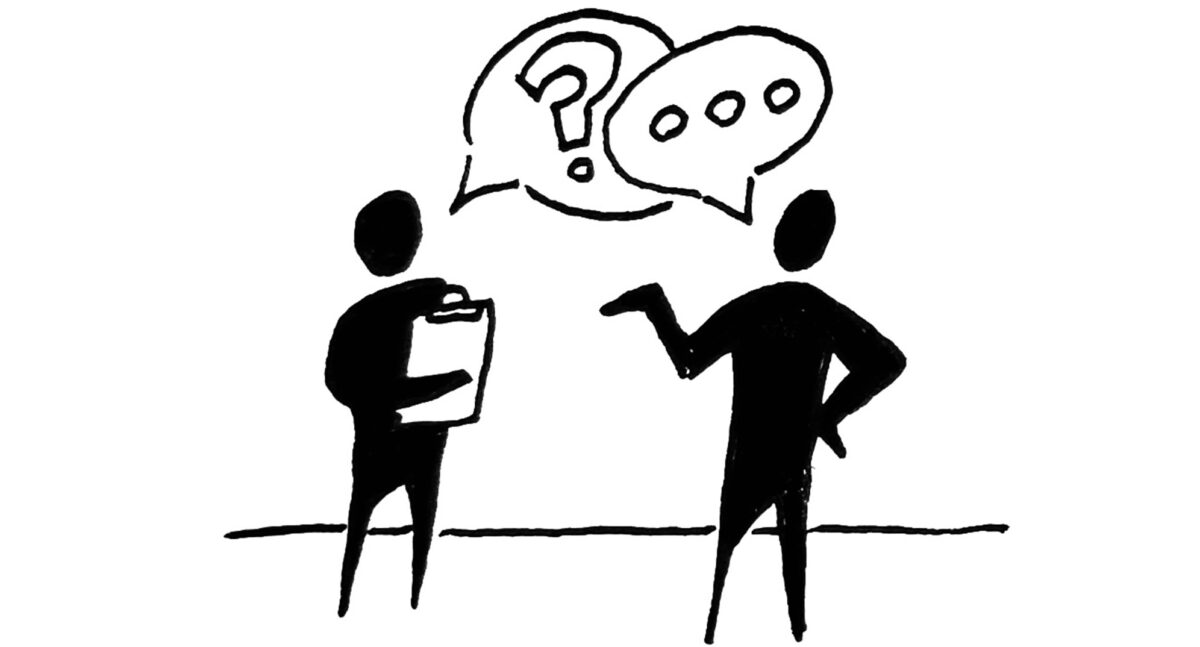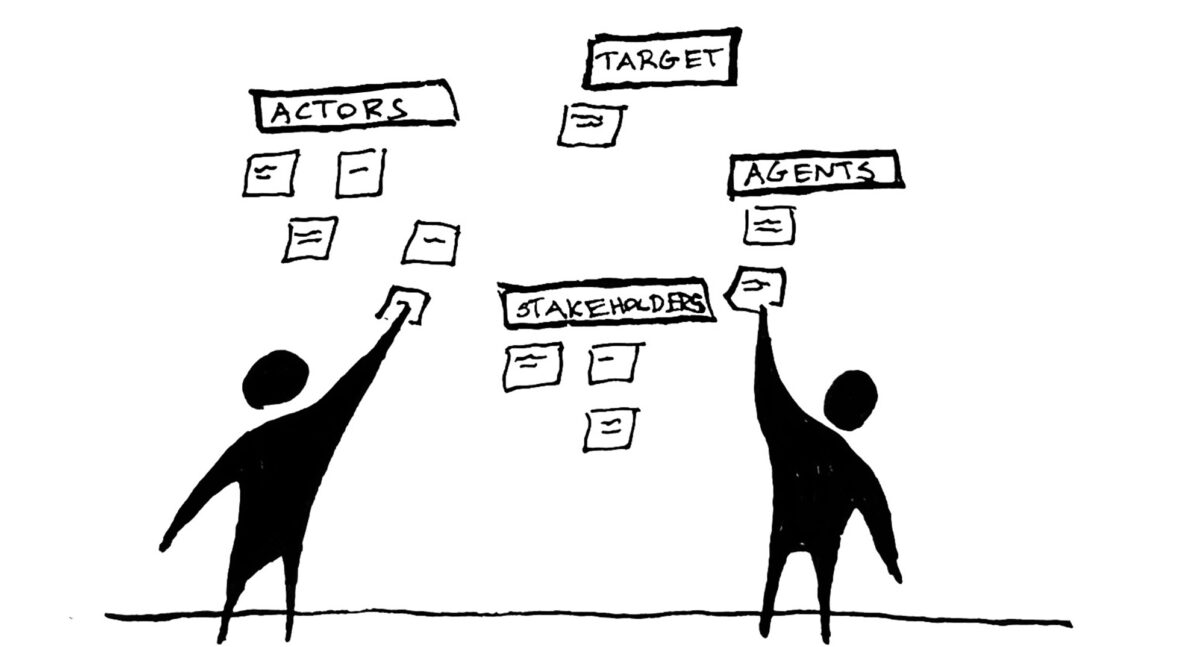An interview is a type of conversation in which one participant asks questions to learn information from another. Interviews can be used to gather information at multiple steps of the innovation journey with a diverse range of stakeholders. For this reason, the amount of structure used by the interviewer can vary, from following a very strict line of questioning to flowing with the interviewee.
Steps:
Structured Interviews
- Come prepared with a set of questions, often beginning broad and then getting specific to the purpose of the interview. It may be important to begin with some icebreaker questions to make the interviewee feel comfortable.
- Listen for and document precise information given by the interviewee. There may be a place for summarizing content when analyzing the data, but during data collection, seek to be precise.
- Try to also observe the nonverbal information given by participants, including body language, facial expressions, and pauses.
Sensing Interviews
- Sensing interviews seek to take participants on a sometimes divergent journey to the ultimate destination. Begin with questions related to their history (their childhoods and previous experiences). Then move towards the present (what are they doing currently and why are they here?). Next is an exploration of the present situation and topic at hand (What is going on? What are the barriers and current costs?). And finally, end with imagining the future (What could be different? How could we get there?)
- The documentation of a sensing interview can be very specific but should follow and capture the sometimes nonlinear connections the interviewee makes.
- Observing nonverbal information is important for sensing interviews as well.
Considerations:
- Limit the number of innovation team members present at the interview. Consider bringing a notetaker or a photographer but be considerate of the space where the interview is taking place and the interviewee’s comfort with sharing their stories with multiple people.
- Consider asking for consent to record the interview, which can then allow for a full transcription of the conversation which means more data to analyze.
- Reflective listening is a tool that interviewers can use to gain a greater understanding and deepen the conversation. Reflective listening generally involves (1) repeating back facts to check for understanding, going deeper by (2) repeating feelings the interviewee expressed through their tone and word choice, and going even deeper by (3) expressing the values heard from the speaker.
References:
- IDEO (n.d.). Interview. Design Kit. Retrieved from https://www.designkit.org/methods/2
- Jourdain, K. (2014). Deep Sensing Interviews. ShapeShift Strategies. Retrieved from https://shapeshiftstrategies.com/2012/04/01/deep-sensing-interviews/
- Future Services Institute (2020). Art of Hosting Workbook 2020.



